VLA Reveals "Smoking Gun" on Multiple-Star Formation Process
Graphics Page
|
ARTIST'S CONCEPTION of proposed formation process
for the multiple-star system L1551 IRS5, as revealed by observations
with the Very Large Array (VLA) radio telescope. Top panel: large
disk-like cloud of gas and dust rotates. Middle panel: two smaller
disks of gas and dust fragment from the large disk and begin to
condense into protostars, each having its own surrounding disk and
shooting "jets" of material outward from the poles of its disk.
Bottom panel: A third, smaller disk and protostar joins the sytem,
either through the same fragmentation process or by being
captured gravitationally by the larger protostars.
CREDIT: Bill Saxton, NRAO/AUI/NSF
|
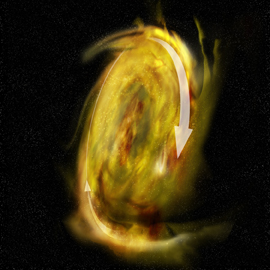
Top Panel
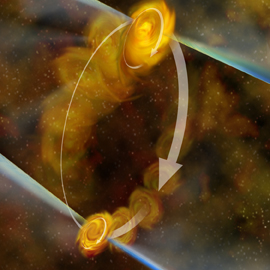
Middle Panel
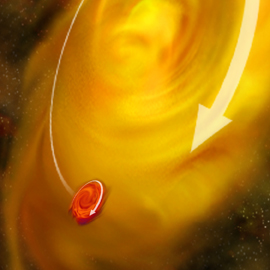
Bottom Panel
|
Click on Images for Larger Files
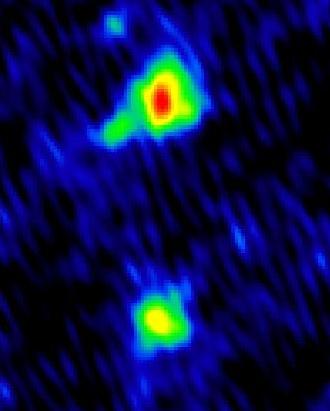
VLA Image of L1551 IRS 5. The two large objects are
the two main protostars in the system with their surrounding
disks of gas and dust. The extension coming out of the
lower left of the top one is the newly-discovered third
protostar in the system.
CREDIT: Lim & Takakuwa, NRAO/AUI/NSF
|
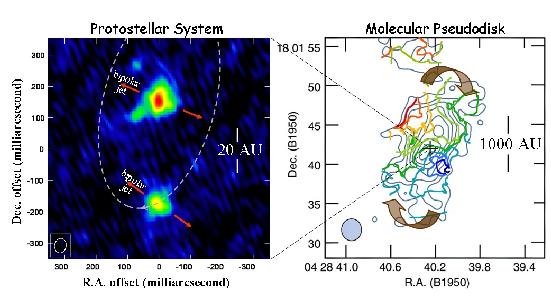
VLA Images of the multiple-star system and the
larger, surrounding gas-and-dust disk. At left, the
protostars are shown with the direction of their
orbits indicated. At right, the larger disk is shown
in a contour-map image, with the direction of its
rotation indicated by arrows. The molecular pseudodisk
image at right is adapted from Momose et al.,
Astrophysical Journal 504, 314, 1998.
CREDIT: Lim & Takakuwa, NRAO/AUI/NSF
|
Click on Images for Larger Files
Modified on
Friday, 15-Dec-2006 10:26:35 EST
|